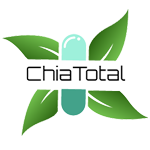The Importance of Essential Fatty Acids in the Skin
Research has increasingly emphasized the importance of Essential Fatty Acids (Omega 3 and Omega 6) in a healthy body. But more recent studies go further, alluding to these as key substances to maintain skin health, Even to prevent and cure certain conditions of the same.
The skin is a heterogeneous organ formed by multiple tissues and organized in 3 layers, where its attachments are distinguished. It is considered as an organ of multiple perception by the information that receives.
In the skin we can differentiate two basic components:
Epidermis: It has between 60 and 75% of water.
Dermis: Composed of collagen fibers and elastic fibers.
Essential Fatty Acids Essential
Fatty acids can not be produced by the human body and must be incorporated into the diet. They are:
Omega 3 (alpha linolenic acid and its derivatives).
Omega 6 (linoleic acid)
Among other benefits, AGEs are recognized as having the ability to lower blood pressure, reduce arrhythmia and the likelihood of sudden death, lower triglycerides, lower LDL (bad cholesterol), and raise HDL (good cholesterol) The symptomatology of inflammatory diseases.
Natural sources of AGE
Animal: blue fish oil: tuna, pink salmon,
black hake , anchovies, sardines, herring, threshing and seafood.
Vegetable: Salvia Chia oils, flax, evening primrose, corn, soybean, sunflower,
borage, canola, dried fruit, seaweed, redcurrant seeds.
The lack of AGE Omega and Omega 6 produces
– Reduction of water and structural lipids
– Desquamation of the horny layer
– Alteration of keratinization.
– Dryness, roughness.
– Itching
– Inflammation
What is sensitive skin?
It is the particular susceptibility to placing on the skin cosmetic products commonly used. It is characterized by:
. Feeling of discomfort, pruritus, burning, dysesthesias without
clinically evident dermatological lesion .
. It is more common in people with dry skin.
. It most often affects white women and individuals.
. Its pathophysiology is not clear.
There is a new therapeutic line for the skin, made with natural components highly effective to combat any condition of severe skin dryness caused by the deficiency of Essential Fatty Acids.
The product is ideal for those who have altered skin barrier and suffer from: atopic dermatitis, senile skin and sensitive skin.
Its special formulation provides the necessary balance between Omega 3 and 6 Fatty Acids, fundamental components of the skin barrier.
It is an efficient transport to carry the essential fatty acids to the cells of the epidermis, increasing the flexibility of the cellular membranes and achieving that it diminishes the transdermal loss of water.
Components:
Salvia Chia Oil
It is emollient, restructurant of the cellular membrane, anti-inflammatory and regulator of the release of cytokines.
Oat extract
It is antioxidant, membrane reshaping, emollient and softener, antipruritic, anti-inflammatory and maintains the
barrier effect on the skin .
Shea Butter
Emollient, antioxidant, favors the epidermal exchange and favors the production of collagen.
Panthenol
promotes epidermal repair and keratinization.
Hyaluronic Acid
Promotes tissue repair, is anti-inflammatory, antioxidant, favors epidermal remodeling.
Dermomega
Formulated based on chia oil
. Extracted from the Spanish sage
. It has 32 to 39% oil
. Antioxidants
. It is a natural source of Omega 3 and Omega 6 fatty acids.
Lab. Dr. Madaus
